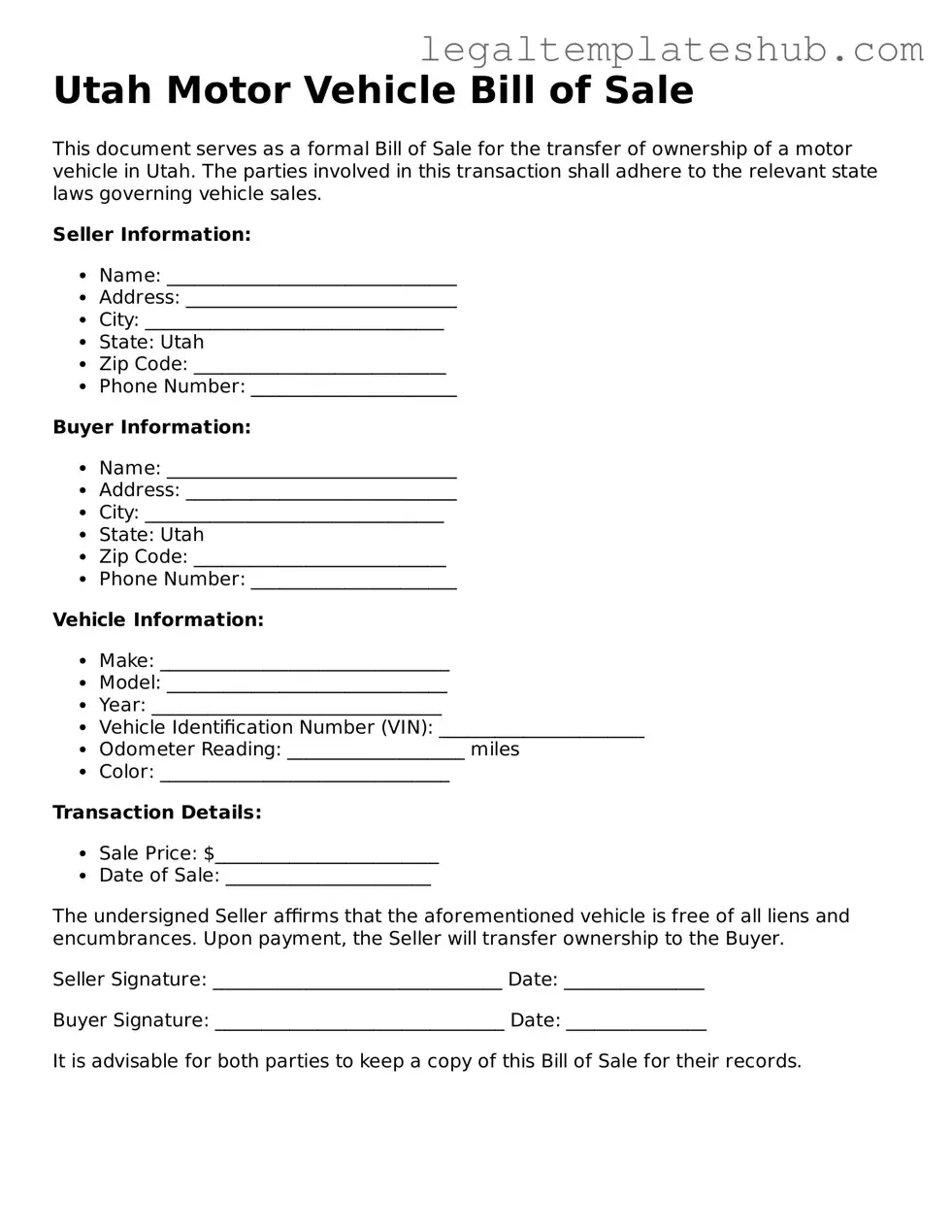Printable Motor Vehicle Bill of Sale Document for Utah
The Utah Motor Vehicle Bill of Sale is a crucial document that serves as proof of the transfer of ownership for a vehicle between a seller and a buyer. This form not only protects both parties involved in the transaction but also ensures that the necessary information is documented accurately. To begin the process of completing this important form, click the button below.
Access Editor
